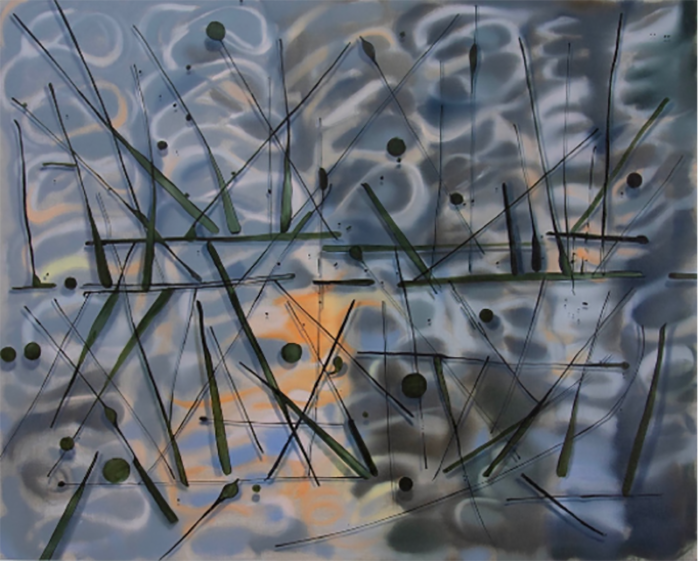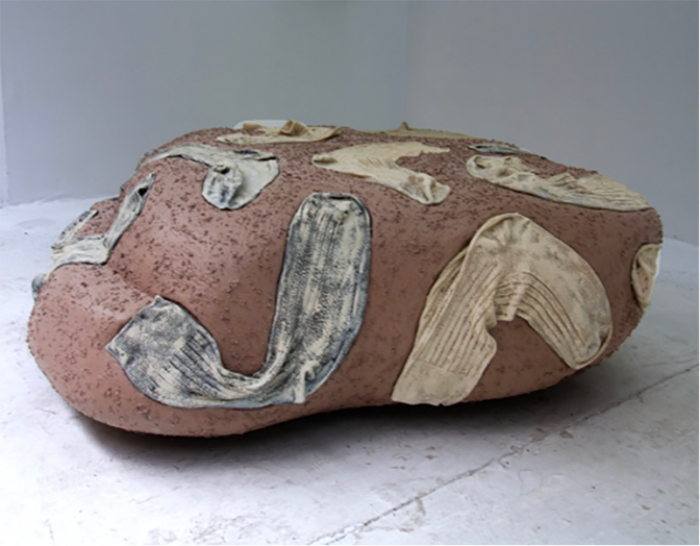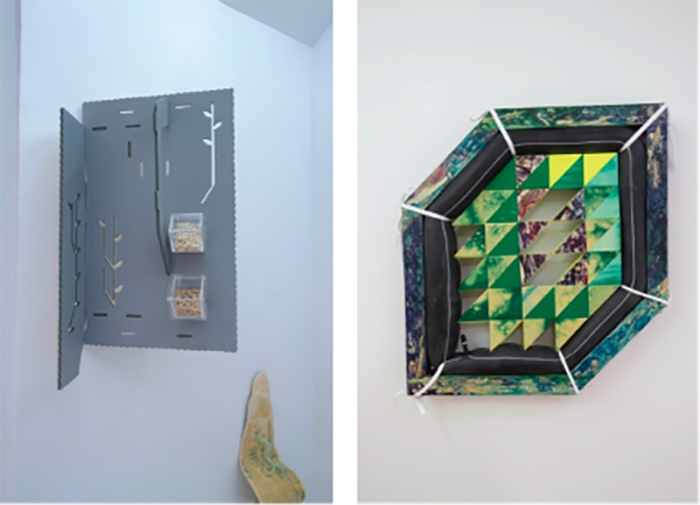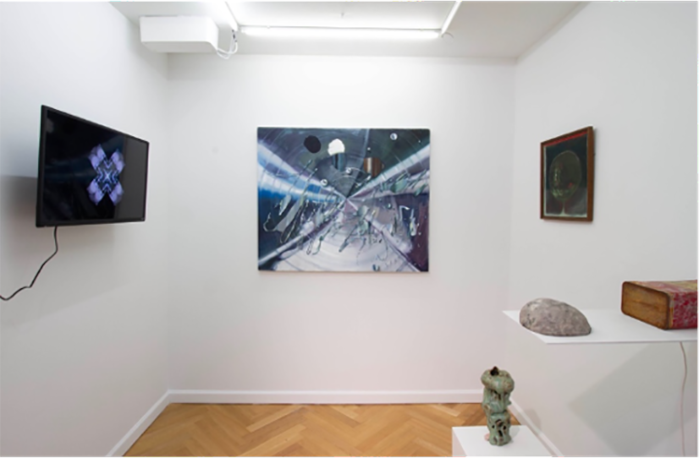
Learning to read from lips and stones at Below Grand Gallery
August 5- September 9, 2023
Images courtesy of Below Grand Gallery
Unique and unexpected, Below Grand is nestled in a lived-in wholesaler in Chinatown, with one gallery room occupying the store’s window display and the other accessible only through the store’s entrance. As part of the shop’s day-to-day motions, Below Grand is so integrated into the mundane reality of shelves and goods, invoices and dollies, that it proudly declares the message: Art and life intrude on each other’s space. The ongoing group show at the gallery, Learning to read from lips and stones, addresses and venerates precisely this interlocution. This exhibition features the work of Vernon Byron, Shuyi Cao, Julián Chams, David Gilbert, Lauren Anaïs Hussey, Dana Levy, Yo-Yo Lin and Yidan Zeng, Matt Logsdon, Bradley Marshall, Alex McTigue, and Julia Rooney. By presenting a complex system of material documentation, the show raises the question: What does it mean to preserve the relics of existing, living, and being?


As a response to human society at large, many artworks in the front gallery fold and unfold onto certain modes of urban living. Gleaming with a metallic luster, Greenpoint Avenue by Alex McTigue monumentalizes the literal ridges and unevenness of the ground we walk on—“autotelic and expressive and wanting.” McTigue translates the avenue’s course of use into engraving-like glyphs, to be read vertically against the wall as opposed to being seen as a flat, earthbound backdrop of pedestrian activities. At the center of the gallery, Mounds with Socks by Julián Chams elicits many melancholic speculations. When scrutinized independently, socks seem to carry connotations that are “intimate, personal, and vulnerable.” Were they left behind by a vagabond? Or were they disowned due to years of wear and tear? The two pieces by McTigue and Chams fossilize the phantom of previous movement and use.

Shuyi Cao and David Gilbert explore the morphing elements of nature through organic forms. Julia Rooney and Lauren Anaïs Hussey capture transient moments and processes through lyrical abstraction. Bradley Marshall, on the other hand, mobilizes the geometry of miniature model kits or jigsaw puzzles. The incorporation of cheerios, oats, and pebbles turns an apparatus of play into an unconventional storage unit of selective visibility and overturned dimensions: one only sees the pantry items when hastily browsing from the outside. To see the pebbles and the weight-bearing brackets behind the sculpture requires physical entry through the display window, thereby adding a new layer of spectator responsibility to the ideas of localism and site-specificity.
Similarly, Dana Levy places a projector into a rock-like mini-cave and points it toward the bottom of a rusted tin container. I would not have found out about the projector if I had not pulled out my phone trying to take a picture of the installation. More than perplexed by the glitchy graphics, it took me a while to come to understand that it was neither my phone nor a flickering light bulb. The rock-projector and the container seem to echo the relationship between the gallery space and the store, with the former disturbed by artistic fabrication and the latter predicated on necessity and commercial exchange. Localism is further emphasized and interpreted as not only a way of viewing but also as an organic response to the dynamics of the environment that houses the show. It is about how one finds oneself circulating in and for the space, about how the objects take root in the space, and about the potentiality of simultaneous existences logged by and ingrained into the artworks.

Expounding upon ideas of reflection, symmetry, duality, and connection, this “virtual experience” deploys material as a praxis to living. Learning to read from lips and stones approaches the many textures of living through a lexicon that is anthropological and witty. The artists turn emotions, perceptive senses, and physical touch into enigmatic forms. It is an anti-loud veneration of living and existing—a view onto the B-side.
